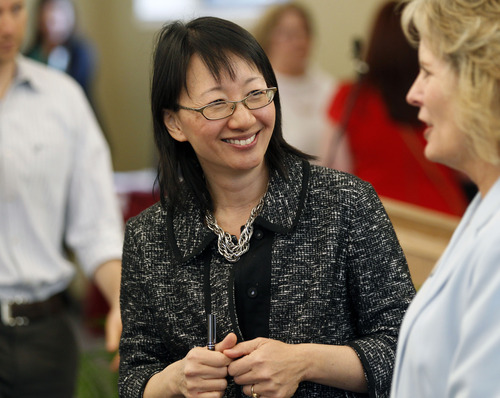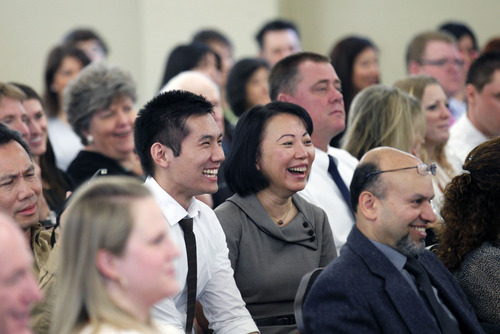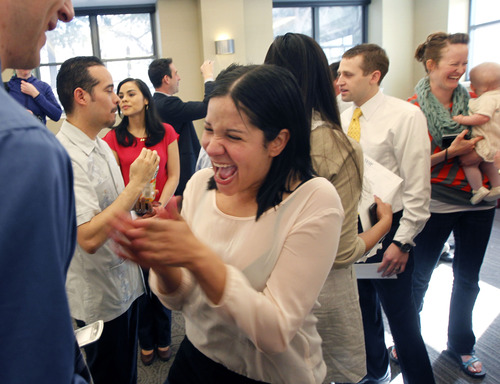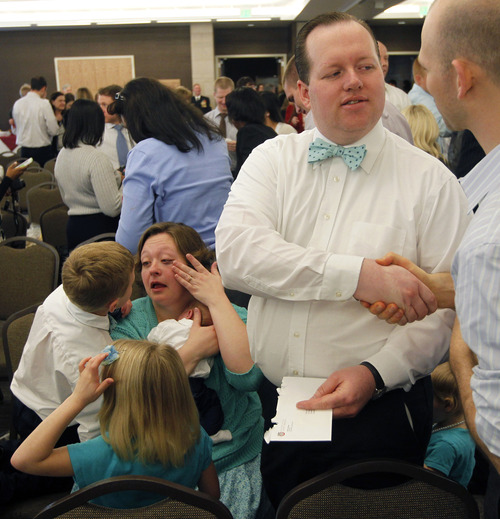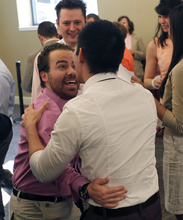This is an archived article that was published on sltrib.com in 2013, and information in the article may be outdated. It is provided only for personal research purposes and may not be reprinted.
Seventy-three students at the University of Utah's School of Medicine learned Friday where they will serve their residencies, joining thousands of students across the country ripping open envelopes in the annual March tradition.
The 21 women and 52 men are headed to 24 states, pursuing 17 specialities, Dean Vivian Lee announced at the morning ceremony. Twenty-six are training in primary care, a number closely watched as the nation copes with a shortage of such doctors — a gap expected to grow as the population ages and more Americans are insured under health reform.
Last year, 37 of the U.'s 97 graduating students were matched with residencies in primary care. This year's total class of 74 students — down from an entering class of 82 — is smaller because the U. shrank its class size by 20 slots in 2010 in the wake of cuts to state and Medicaid funding and declines in cigarette tax revenue.
But at Friday's ceremony, David Sundwall, president of the medical school's alumni association, cheered, "We got the funding to increase the class size!"
Under the budget approved by lawmakers Thursday night, the U. will grow its class size to 102 next year and later to 122.
Sundwall reminded the students to remember to enjoy the environments outside their hospitals as they train and told them to not be intimated by fellow residents.
The U.'s medical school "has trained you very well to compete with your peers and to contribute," he said.
Lee urged them to "trust that you're on the right path." It's not the residency that makes the physician, she said, "it's the physician that makes the residency."
Cheers — and shouts of "Yes!" and "Exactly where I wanted!" — broke out as U. students opened their envelopes amid families in the University Guest House Ballroom at Fort Douglas.
The National Resident Matching Program connected more than 17,000 traditional medical school seniors and more than 16,000 other applicants to programs across the nation, where the new residents will train for the next three to seven years in specialities that include pediatrics, internal medicine, obstetrics and gynecology, and emergency medicine.
Students list their top choices, programs identify their top selections, and the national program uses a matching algorithm to connect them. Those who are not immediately matched pursue the remaining openings. A smaller number opt against seeking a residency, and may go into research or seek further degrees.


